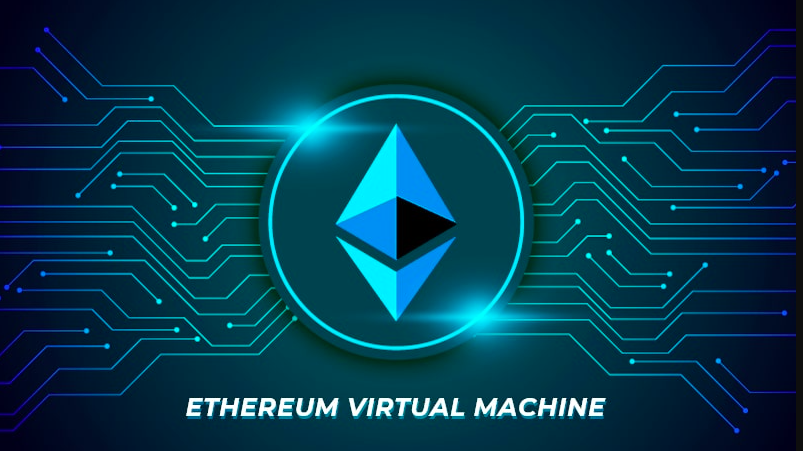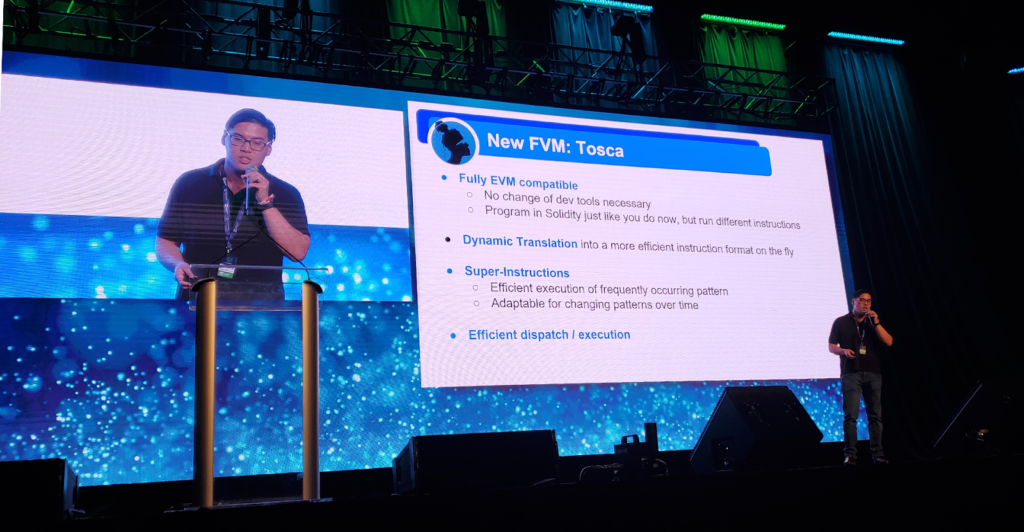As a tale, for now, it has appeared much more akin to a work of fiction than a prophecy – many highly promising projects have emerged and faded away; EXCEPT FOR ONE which is Fantom! However, the most they’ve acquired was a minor nibble out of ETH’s massive user base, and indeed, the competition has seemingly spurred innovation within Ethereum forward at unprecedented velocity – thus further solidifying Vitalik Buterin’s brain child’s triumph. But what renders Ethereum such an appealing environment to operate in? The response is not its price action or popularity (at least not merely those), but its technical backbone – the Ethereum Virtual Machine (EVM).
EVM: An Industry Tradition
The term ‘Virtual Machine’ can be somewhat deceptive to the uninitiated, but the concept is easily clarified: if the Ethereum blockchain was a computer, it blocks different logic boards and smart contracts its applications, the EVM would be its operating system.

In many respects, it is the heart of the blockchain’s architecture: a program that executes application code and smart contracts, furnishing an environment for them to operate alongside the Ethereum network. It is a highly adaptable and Turing-complete machine, capable of executing any program coded in any programming language, which renders it an evident contender for extensive infiltration of any programming landscape – these comprise Solidity, Vyper, Python, and Yul among myriad others.
The machine’s adaptability is what led to a rapid increase of decentralized finance and NFT projects being established within the Ethereum environment, further consolidating its market share through the non-fungible explosion of the past couple of years. Its distributed consensus mechanism, conversely, allows users to execute complex smart contracts across diverse computing environments without being impacted by single-node failures.
While competition is indeed looming as always, there is a mounting number of EVM-compatible layer-2 blockchains out there, further solidifying it as a staple of the future of Web3 development.
As revolutionary as it is, however, not even this magnificent EVM is flawless. As with most Ethereum-based solutions, it has been plagued by the necessity for extreme efficiency in smart contract design. The elevated transaction costs (gas fees) characteristic of Ethereum (though this has been alleviated recently by the Merge) favor seasoned developers who are capable of maximizing throughput without incurring excessive service costs (which would inevitably have to be transferred onto clients).
It’s not even reached its ultimate form yet. Post-Merge, the plan is for a colossal shift towards a new virtual machine, branded eWASM.
Fantom is Ready to Challenge this Success Story

Fantom is an open-source, permissionless, and decentralized smart-contract blockchain which was formulated specifically to challenge Ethereum’s lead in the sector. Its token is significantly smaller than ETH, with a market cap of approximately $1 billion and daily volume around $34 million.
It has a highly developed governance system, furnishes a scalable environment, its multi-use token holds great potential, and its dependence thus far on the aforementioned EVM solution has led to its rapid success owing to exceptional compatibility.
This is, however, on the verge of changing as Fantom has opted to diverge from the Ethereum umbrella and delve into its own virtual machine development. Bemoaning slow throughput and lack of substantial evolutionary steps with the original EVM, the Fantom Foundation (which operates the project) constructed their own virtual apparatus in collaboration with the University of Sydney and Yonsei University.
Fantom: Tosca will Replace FVM

The Fantom Virtual Machine (FVM) has already undergone an initial overhaul and innovation cycle, However, they have already introduced “Tosca Fantom Virtual Machine” which is the latest upgrade that will replace the EVM and increase the speed of execution on Fantom. This will lead to significant improvements in transactions per second, averaging approximately 4500 per second in just one experiment that they have done. The transactions were 8.1x faster and the blocks used 98% less storage.
However, It is devised to remain vastly compatible and was Solidity-friendly from inception to facilitate seamless migration into the environment. It also features parallel processing and bytecode-compression, resulting in expedited transactions and an exceedingly efficient storage system. The Fantom Foundation’s proprietary tests indicate a remarkable 8.1x speed surge and a staggering 98% reduction in storage requirements as a consequence.
The second iteration of the project places further emphasis on database efficiency: Fantom has devised an entirely novel data structure that condenses storage addresses and relies on files rather than key-value databases, a solution akin to virtual memory and swapping in traditional operating systems such as Linux.
| Note: FVM also integrates adaptive smart contract execution and introduces C++ support through a complete rewrite aimed at enhancing speed while upholding security uncompromised. |
Moreover, Fantom revolutionizes the prioritization of transaction processing, conventionally a sequential and hence sluggish process, with the advent of parallel transaction processes. These do not cause conflicts and instead augment efficiency, particularly when the outcome of each transaction is linked by an extant smart contract rule. In many respects, it’s evident that the Fantom Foundation is decisively shifting away from an intention to assimilate Ethereum in their operations to enhancing it, and it’s going all in to supplant it.
Conclusion
What halted the ascendancy of many equally promising challenger projects was not the underlying tech – even the most fervent ETH bag holder would concede it comes with numerous flaws to rectify – but rather with the Herculean task of instigating a massive paradigm and user base shift in the midst of a bear market.
Despite this, the groundwork for success is present, and if the Fantom Foundation continues to progress with cautious and meticulous technical planning while the sunny days return to the realm of crypto investment, they are bound to be positioned for a splendid future. Until then, EVM remains a more steadfast bet, but FVM has a high potential and more upcoming innovation.












